|
[1]
|
[ B. C. A. and R. J. -P.,
Cytokines and Cytokine Receptors: Physiology and Pathological Disorders CRC Press.
|
|
[2]
|
[ L. A. Adams, Biomarkers of liver fibrosis, J. Gastroenterol Hepatol, 26 (2011): 802-809.
|
|
[3]
|
[ S. Albeiroti,K. Ayasoufi,D. R. Hill,B. Shen,C. A. de la Motte, Platelet hyaluronidase-2: An enzyme that translocates to the surface upon activation to function in extracellular matrix degradation, Blood, 125 (2015): 1460-1469.
|
|
[4]
|
[ A. Baranova, P. Lal, A. Birerdinc and Z. M. Younossi,
Non-invasive markers for hepatic fibrosis BMC Gastroenterol 11 (2011), 91.
|
|
[5]
|
[ L. Barron,T. A. Wynn, Fibrosis is regulated by Th2 and Th17 responses and by dynamic interactions between fibroblasts and macrophages, Am. J. Physiol. Gastrointest. Liver Physiol., 300 (2011): G723-728.
|
|
[6]
|
[ D. C. Baumgart,S. R. Carding, Inflammatory bowel disease: Cause and immunobiology, Lancet, 369 (2007): 1627-1640.
|
|
[7]
|
[ K. D. Bentsen,J. H. Henriksen,S. Boesby,K. Horslev-Petersen,I. Lorenzen, Hepatic and renal extraction of circulating type Ⅲ procollagen amino-terminal propeptide and hyaluronan in pig, J. Hepatol., 9 (1989): 177-183.
|
|
[8]
|
[ C. E. Boorsma, C. Draijer and B. N. Melgert,
Macrophage heterogeneity in respiratory diseases Mediators Inflamm. 2013 (2013), 769214, 19pp.
|
|
[9]
|
[ A. Camelo, R. Dunmore, M. A. Sleeman and D. L. Clarke, The epithelium in idiopathic pulmonary fibrosis: breaking the barrier Front Pharmacol 4 (2014), 173.
|
|
[10]
|
[ A. Cequera,M. C. Garcia de Leon Mendez, [Biomarkers for liver fibrosis: Advances, advantages and disadvantages], Rev Gastroenterol Mex, 79 (2014): 187-199.
|
|
[11]
|
[ C. Chizzolini, T cells, B cells, and polarized immune response in the pathogenesis of fibrosis and systemic sclerosis, Curr Opin Rheumatol, 20 (2008): 707-712.
|
|
[12]
|
[ D. L. Clarke, A. M. Carruthers, T. Mustelin and L. A. Murray,
Matrix regulation of idiopathic pulmonary fibrosis: The role of enzymes Fibrogenesis Tissue Repair 6 (2013), 20.
|
|
[13]
|
[ M. K. Connolly,A. S. Bedrosian,J. Mallen-St Clair,A. P. Mitchell,J. Ibrahim,A. Stroud,H. L. Pachter,D. Bar-Sagi,A. B. Frey,G. Miller, In liver fibrosis, dendritic cells govern hepatic inflammation in mice via TNF-alpha, J. Clin. Invest., 119 (2009): 3213-3225.
|
|
[14]
|
[ Z. D. Daniil,E. Papageorgiou,A. Koutsokera,K. Kostikas,T. Kiropoulos, Serum levels of oxidative stress as a marker of disease severity in idiopathic pulmonary fibrosis, Pulm Pharmacol Ther, 21 (2008): 26-31.
|
|
[15]
|
[ J. Day,A. Friedman,L. S. Schlesinger, Modeling the immune rheostat of macrophages in the lung in response to infection, Proc. Natl. Acad. Sci. U.S.A., 106 (2009): 11246-11251.
|
|
[16]
|
[ P. Deepak,S. Kumar,D. Kishore,A. Acharya, IL-13 from Th2-type cells suppresses induction of antigen-specific Th1 immunity in a T-cell lymphoma, Int. Immunol., 22 (2010): 53-63.
|
|
[17]
|
[ J. A. Dranoff,R. G. Wells, Portal fibroblasts: Underappreciated mediators of biliary fibrosis, Hepatology, 51 (2010): 1438-1444.
|
|
[18]
|
[ J. S. Duffield, Macrophages and immunologic inflammation of the kidney, Semin. Nephrol., 30 (2010): 234-254.
|
|
[19]
|
[ H. L. Fallatah, Noninvasive biomarkers of liver fibrosis: An overview Adva. in Hepa. 2014 (2014), Article ID 357287, 15pp.
|
|
[20]
|
[ J. M. Fan,Y. Y. Ng,P. A. Hill,D. J. Nikolic-Paterson,W. Mu,R. C. Atkins,H. Y. Lan, Transforming growth factor-beta regulates tubular epithelial-myofibroblast transdifferentiation in vitro, Kidney Int., 56 (1999): 1455-1467.
|
|
[21]
|
[ S. Fichtner-Feigl,W. Strober,K. Kawakami,R. K. Puri,A. Kitani, IL-13 signaling through the IL-13alpha2 receptor is involved in induction of TGF-beta1 production and fibrosis, Nat. Med., 12 (2006): 99-106.
|
|
[22]
|
[ S. L. Friedman, Hepatic stellate cells: Protean, multifunctional, and enigmatic cells of the liver, Physiol. Rev., 88 (2008): 125-172.
|
|
[23]
|
[ R. M. Greco,J. A. Iocono,H. P. Ehrlich, Hyaluronic acid stimulates human fibroblast proliferation within a collagen matrix, J. Cell. Physiol., 177 (1998): 465-473.
|
|
[24]
|
[ J. Guechot,L. Serfaty,A. M. Bonnand,O. Chazouilleres,R. E. Poupon,R. Poupon, Prognostic value of serum hyaluronan in patients with compensated HCV cirrhosis, J. Hepatol., 32 (2000): 447-452.
|
|
[25]
|
[ M. F. Hadi,E. A. Sander,J. W. Ruberti,V. H. Barocas, Simulated remodeling of loaded collagen networks via strain-dependent enzymatic degradation and constant-rate fiber growth, Mech Mater, 44 (2012): 72-82.
|
|
[26]
|
[ P. Halfon, M. Bourliere, G. Penaranda, R. Deydier, C. Renou, D. Botta-Fridlund, A. Tran, I. Portal, I. Allemand, A. Rosenthal-Allieri and D. Ouzan, Accuracy of hyaluronic acid level for predicting liver fibrosis stages in patients with hepatitis C virus,
Comp Hepatol 4 (2005), 6.
|
|
[27]
|
[ L. Hammerich,F. Tacke, Role of gamma-delta T cells in liver inflammation and fibrosis, World J Gastrointest Pathophysiol, 5 (2014): 107-113.
|
|
[28]
|
[ A. Hancock,L. Armstrong,R. Gama,A. Millar, Production of interleukin 13 by alveolar macrophages from normal and fibrotic lung, Am. J. Respir. Cell Mol. Biol., 18 (1998): 60-65.
|
|
[29]
|
[ W. Hao,E. D. Crouser,A. Friedman, Mathematical model of sarcoidosis, Proc. Natl. Acad. Sci. U.S.A., 111 (2014): 16065-16070.
|
|
[30]
|
[ W. Hao and A. Friedman, The LDL-HDL Profile Determines the risk of atherosclerosis: a Mathematical Model PLoS ONE 9 (2014), e90497.
|
|
[31]
|
[ W. Hao, A. Friedman and C. Marsh, a mathematical model of idiopathic pulmonary fibrosis Plos One 10 (2015), e0135097.
|
|
[32]
|
[ W. Hao,B. H. Rovin,A. Friedman, Mathematical model of renal interstitial fibrosis, Proc. Natl. Acad. Sci. U.S.A., 111 (2014): 14193-14198.
|
|
[33]
|
[ W. Hao, L. S. Schlesinger and A. Friedman, Modeling granulomas in response to infection in the lung PLoS ONE 11 (2016), e0148738.
|
|
[34]
|
[ E. L. Herzog,R. Bucala, Fibrocytes in health and disease, Exp. Hematol., 38 (2010): 548-556.
|
|
[35]
|
[ K. Iyonaga,M. Takeya,N. Saita,O. Sakamoto,T. Yoshimura,M. Ando,K. Takahashi, Monocyte chemoattractant protein-1 in idiopathic pulmonary fibrosis and other interstitial lung diseases, Hum. Pathol., 25 (1994): 455-463.
|
|
[36]
|
[ C. Jakubzick,E. S. Choi,B. H. Joshi,M. P. Keane,S. L. Kunkel, Therapeutic attenuation of pulmonary fibrosis via targeting of IL-4-and IL-13-responsive cells, J. Immunol., 171 (2003): 2684-2693.
|
|
[37]
|
[ C. A. Janeway, T. P., W. M. and M. J. Shlomchik,
Immunobiology, 5th edition, The Immune System in Health and Disease 2001.
|
|
[38]
|
[ R. Khan,R. Sheppard, Fibrosis in heart disease: Understanding the role of transforming growth factor-beta in cardiomyopathy, valvular disease and arrhythmia, Immunology, 118 (2006): 10-24.
|
|
[39]
|
[ N. Kikuchi, Y. Ishii, Y. Morishima, Y. Yageta, N. Haraguchi, K. Itoh, M. Yamamoto and N. Hizawa, Nrf2 protects against pulmonary fibrosis by regulating the lung oxidant level and Th1/Th2 balance Respir. Res. 11 (2010), 31.
|
|
[40]
|
[ C. R. Kliment,T. D. Oury, Oxidative stress, extracellular matrix targets, and idiopathic pulmonary fibrosis, Free Radic. Biol. Med., 49 (2010): 707-717.
|
|
[41]
|
[ P. Kong,P. Christia,N. G. Frangogiannis, The pathogenesis of cardiac fibrosis, Cell. Mol. Life Sci., 71 (2014): 549-574.
|
|
[42]
|
[ T. Lan, T. Kisseleva and D. A. Brenner, Deficiency of NOX1 or NOX4 Prevents Liver inflammation and Fibrosis in Mice through inhibition of Hepatic Stellate cell activation PLoS ONE 10 (2015), e0129743.
|
|
[43]
|
[ A. Leask, TGFbeta, cardiac fibroblasts, and the fibrotic response, Cardiovasc. Res., 74 (2007): 207-212.
|
|
[44]
|
[ A. Leask,D. J. Abraham, TGF-beta signaling and the fibrotic response, FASEB J., 18 (2004): 816-827.
|
|
[45]
|
[ B. Lee, X. Zhou, K. Riching, K. W. Eliceiri, P. J. Keely, S. A. Guelcher, A. M. Weaver and Y. Jiang, a three-dimensional computational model of collagen network mechanics PLoS ONE 9 (2014), e111896.
|
|
[46]
|
[ C. Liedtke, T. Luedde, T. Sauerbruch, D. Scholten, K. Streetz, F. Tacke, R. Tolba, C. Trautwein, J. Trebicka and R. Weiskirchen, Experimental liver fibrosis research: Update on animal models, legal issues and translational aspects Fibrogenesis Tissue Repair 6 (2013), 19.
|
|
[47]
|
[ P. Lijnen,V. Petrov, Transforming growth factor-beta 1-induced collagen production in cultures of cardiac fibroblasts is the result of the appearance of myofibroblasts, Methods Find Exp Clin Pharmacol, 24 (2002): 333-344.
|
|
[48]
|
[ L. Liu,P. Kou,Q. Zeng,G. Pei,Y. Li,H. Liang,G. Xu,S. Chen, CD4+ T Lymphocytes, especially Th2 cells, contribute to the progress of renal fibrosis, Am. J. Nephrol., 36 (2012): 386-396.
|
|
[49]
|
[ T. Liu,X. Wang,M. A. Karsdal,D. J. Leeming,F. Genovese, Molecular serum markers of liver fibrosis, Biomark Insights, 7 (2012): 105-117.
|
|
[50]
|
[ Y. Liu,X. M. Wen,E. L. Lui,S. L. Friedman,W. Cui,N. P. Ho,L. Li,T. Ye,S. T. Fan,H. Zhang, Therapeutic targeting of the PDGF and TGF-beta-signaling pathways in hepatic stellate cells by PTK787/ZK22258, Lab. Invest., 89 (2009): 1152-1160.
|
|
[51]
|
[ S. Lo Re,D. Lison,F. Huaux, CD4+ T lymphocytes in lung fibrosis: Diverse subsets, diverse functions, J. Leukoc. Biol., 93 (2013): 499-510.
|
|
[52]
|
[ N. J. Lomas,K. L. Watts,K. M. Akram,N. R. Forsyth,M. A. Spiteri, Idiopathic pulmonary fibrosis: immunohistochemical analysis provides fresh insights into lung tissue remodelling with implications for novel prognostic markers, Int J Clin Exp Pathol, 5 (2012): 58-71.
|
|
[53]
|
[ P. Lu,K. Takai,V. M. Weaver,Z. Werb, Extracellular matrix degradation and remodeling in development and disease, Cold Spring Harb Perspect Biol, 3 (2011): 1-25.
|
|
[54]
|
[ I. G. Luzina,N. W. Todd,A. T. Iacono,S. P. Atamas, roles of T lymphocytes in pulmonary fibrosis, J. Leukoc. Biol., 83 (2008): 237-244.
|
|
[55]
|
[ K. J. Maloy,F. Powrie, Intestinal homeostasis and its breakdown in inflammatory bowel disease, Nature, 474 (2011): 298-306.
|
|
[56]
|
[ S. Marino,I. B. Hogue,C. J. Ray,D. E. Kirschner, a methodology for performing global uncertainty and sensitivity analysis in systems biology, J. Theor. Biol., 254 (2008): 178-196.
|
|
[57]
|
[ D. I. McRitchie,N. Isowa,J. D. Edelson,A. M. Xavier,L. Cai, Production of tumour necrosis factor alpha by primary cultured rat alveolar epithelial cells, Cytokine, 12 (2000): 644-654.
|
|
[58]
|
[ D. L. Motola,P. Caravan,R. T. Chung,B. C. Fuchs, Noninvasive biomarkers of Liver Fibrosis: Clinical applications and Future Directions, Curr Pathobiol Rep, 2 (2014): 245-256.
|
|
[59]
|
[ L. A. Murray,Q. Chen,M. S. Kramer,D. P. Hesson,R. L. Argentieri,et. al, TGF-beta driven lung fibrosis is macrophage dependent and blocked by Serum amyloid P, Int. J. Biochem. Cell Biol., 43 (2011): 154-162.
|
|
[60]
|
[ S. Nakatsuji,J. Yamate,S. Sakuma, Macrophages, myofibroblasts, and extracellular matrix accumulation in interstitial fibrosis of chronic progressive nephropathy in aged rats, Vet. Pathol., 35 (1998): 352-360.
|
|
[61]
|
[ Y. E. Nassef,M. M. Shady,E. M. Galal,M. A. Hamed, Performance of diagnostic biomarkers in predicting liver fibrosis among hepatitis C virus-infected Egyptian children, Mem. Inst. Oswaldo Cruz, 108 (2013): 887-893.
|
|
[62]
|
[ Q.H. Nie,Y. F. Zhang,Y. M. Xie,X. D. Luo,B. Shao,J. Li,Y. X. Zhou, Correlation between TIMP-1 expression and liver fibrosis in two rat liver fibrosis models, World J. Gastroenterol., 12 (2006): 3044-3049.
|
|
[63]
|
[ D. J. Nikolic-Paterson, CD4+ T cells: A potential player in renal fibrosis, Kidney Int., 78 (2010): 333-335.
|
|
[64]
|
[ A. Pellicoro,P. Ramachandran,J. P. Iredale,J. A. Fallowfield, Liver fibrosis and repair: Immune regulation of wound healing in a solid organ, Nat. Rev. Immunol., 14 (2014): 181-194.
|
|
[65]
|
[ M. Perepelyuk,M. Terajima,A. Y. Wang,P. C. Georges,P. A. Janmey,M. Yamauchi,R. G. Wells, Hepatic stellate cells and portal fibroblasts are the major cellular sources of collagens and lysyl oxidases in normal liver and early after injury, Am. J. Physiol. Gastrointest. Liver Physiol., 304 (2013): G605-g614.
|
|
[66]
|
[ M. P. Rastaldi,F. Ferrario,L. Giardino,G. Dell'Antonio,C. Grillo,P. Grillo,F. Strutz,G. A. Muller,G. Colasanti,G. D'Amico, Epithelial-mesenchymal transition of tubular epithelial cells in human renal biopsies, Kidney Int., 62 (2002): 137-146.
|
|
[67]
|
[ E. F. Redente,R. C. Keith,W. Janssen,P. M. Henson,L. A. Ortiz,G. P. Downey,D. L. Bratton,D. W. Riches, Tumor necrosis factor-alpha accelerates the resolution of established pulmonary fibrosis in mice by targeting profibrotic lung macrophages, Am. J. Respir. Cell Mol. Biol., 50 (2014): 825-837.
|
|
[68]
|
[ S. D. Ricardo,H. van Goor,A. A. Eddy, Macrophage diversity in renal injury and repair, J. Clin. Invest., 118 (2008): 3522-3530.
|
|
[69]
|
[ J. Rosenbloom,S. V. Castro,S. A. Jimenez, Narrative review: Fibrotic diseases: Cellular and molecular mechanisms and novel therapies, Ann. Intern. Med., 152 (2010): 159-166.
|
|
[70]
|
[ N. Sakai,A. M. Tager, Fibrosis of two: Epithelial cell-fibroblast interactions in pulmonary fibrosis, Biochim. Biophys. Acta, 1832 (2013): 911-921.
|
|
[71]
|
[ M. Selman,A. Pardo, role of epithelial cells in idiopathic pulmonary fibrosis: From innocent targets to serial killers, Proc. Am. Thorac. Soc., 3 (2006): 364-372.
|
|
[72]
|
[ M. Selman,A. Pardo, revealing the pathogenic and aging-related mechanisms of the enigmatic idiopathic pulmonary fibrosis. an integral model, Am. J. Respir. Crit. Care Med., 189 (2014): 1161-1172.
|
|
[73]
|
[ G. Shiha, Serum hyaluronic acid: A promising marker of hepatic fibrosis in chronic hepatitis B, Saudi J Gastroenterol, 14 (2008): 161-162.
|
|
[74]
|
[ Y. Shimizu,H. Kuwabara,A. Ono,S. Higuchi,T. Hisada,K. Dobashi,M. Utsugi,Y. Mita,M. Mori, Intracellular Th1/Th2 balance of pulmonary CD4(+) T cells in patients with active interstitial pneumonia evaluated by serum KL-6, Immunopharmacol Immunotoxicol, 28 (2006): 295-304.
|
|
[75]
|
[ M. S. Simonson,F. Ismail-Beigi, Endothelin-1 increases collagen accumulation in renal mesangial cells by stimulating a chemokine and cytokine autocrine signaling loop, J. Biol. Chem., 286 (2011): 11003-11008.
|
|
[76]
|
[ F. Strutz,M. Zeisberg, renal fibroblasts and myofibroblasts in chronic kidney disease, J. Am. Soc. Nephrol., 17 (2006): 2992-2998.
|
|
[77]
|
[ F. Strutz,M. Zeisberg,A. Renziehausen,B. Raschke,V. Becker,C. van Kooten,G. Muller, TGF-beta 1 induces proliferation in human renal fibroblasts via induction of basic fibroblast growth factor (FGF-2), Kidney Int., 59 (2001): 579-592.
|
|
[78]
|
[ F. Tacke,H. W. Zimmermann, Macrophage heterogeneity in liver injury and fibrosis, J. Hepatol., 60 (2014): 1090-1096.
|
|
[79]
|
[ N. Takemoto,N. Koyano-Nakagawa,T. Yokota,N. Arai,S. Miyatake,K. Arai, Th2-specific DNase I-hypersensitive sites in the murine IL-13 and IL-4 intergenic region, Int. Immunol., 10 (1998): 1981-1985.
|
|
[80]
|
[ R. J. Tan,Y. Liu, Macrophage-derived TGF-beta in renal fibrosis: not a macro-impact after all, Am. J. Physiol. Renal Physiol., 305 (2013): F821-822.
|
|
[81]
|
[ T. T. Tapmeier,A. Fearn,K. Brown,P. Chowdhury,S. H. Sacks,N. S. Sheerin,W. Wong, Pivotal role of CD4+ T cells in renal fibrosis following ureteric obstruction, Kidney Int., 78 (2010): 351-362.
|
|
[82]
|
[ A. L. Tatler,G. Jenkins, TGF-beta activation and lung fibrosis, Proc. Am. Thorac. Soc., 9 (2012): 130-136.
|
|
[83]
|
[ S. S. Veidal,M. A. Karsdal,E. Vassiliadis,A. Nawrocki,M. R. Larsen,Q. H. Nguyen,P. Hagglund,Y. Luo,Q. Zheng,B. Vainer,D. J. Leeming, MMP mediated degradation of type Ⅵ collagen is highly associated with liver fibrosis-identification and validation of a novel biochemical marker assay, PLoS ONE, 6 (2011): e24753.
|
|
[84]
|
[ R. Venkayya,M. Lam,M. Willkom,G. Grunig,D. B. Corry, The Th2 lymphocyte products IL-4 and IL-13 rapidly induce airway hyperresponsiveness through direct effects on resident airway cells, Am. J. Respir. Cell Mol. Biol., 26 (2002): 202-208.
|
|
[85]
|
[ T. Veremeyko, S. Siddiqui, I. Sotnikov, A. Yung and E. D. Ponomarev, IL-4/IL-13-dependent and independent expression of mir-124 and its contribution to M2 phenotype of monocytic cells in normal conditions and during allergic inflammation PLoS ONE 8 (2013), e81774.
|
|
[86]
|
[ M. A. Vernon,K. J. Mylonas,J. Hughes, Macrophages and renal fibrosis, Semin. Nephrol., 30 (2010): 302-317.
|
|
[87]
|
[ T. Wada,K. Furuichi,N. Sakai,Y. Iwata,K. Kitagawa,Y. Ishida,T. Kondo,H. Hashimoto,Y. Ishiwata,N. Mukaida,N. Tomosugi,K. Matsushima,K. Egashira,H. Yokoyama, Gene therapy via blockade of monocyte chemoattractant protein-1 for renal fibrosis, J. Am. Soc. Nephrol., 15 (2004): 940-948.
|
|
[88]
|
[ T. Wada,H. Yokoyama,K. Matsushima,K. Kobayashi, Monocyte chemoattractant protein-1: does it play a role in diabetic nephropathy?, Nephrol. Dial. Transplant., 18 (2003): 457-459.
|
|
[89]
|
[ L. Wei, Immunological aspect of cardiac remodeling: T lymphocyte subsets in inflammation-mediated cardiac fibrosis, Exp. Mol. Pathol., 90 (2011): 74-78.
|
|
[90]
|
[ X. Weng,L. Wang,J. Wang,Y. Hu,H. Du,C. Xu,Y. Xing,X. Li,J. Xiao,Q. Zhang, Grain number, plant height, and heading date7 is a central regulator of growth, development, and stress response, Plant Physiol., 164 (2014): 735-747.
|
|
[91]
|
[ T. A. Wynn, Fibrotic disease and the T(H)1/T(H)2 paradigm, Nat. Rev. Immunol., 4 (2004): 583-594.
|
|
[92]
|
[ L. Xiao,Y. Du,Y. Shen,Y. He,H. Zhao,Z. Li, TGF-beta 1 induced fibroblast proliferation is mediated by the FGF-2/ErK pathway, Front Biosci (Landmark Ed), 17 (2012): 2667-2674.
|
|
[93]
|
[ A. Yates,R. Callard,J. Stark, Combining cytokine signalling with T-bet and GaTa-3 regulation in Th1 and Th2 differentiation: a model for cellular decision-making, J. Theor. Biol., 231 (2004): 181-196.
|
|
[94]
|
[ H. Zhao,Y. Dong,X. Tian,T. K. Tan,Z. Liu,Y. Zhao,Y. Zhang,D. C. h. Harris,G. Zheng, Matrix metalloproteinases contribute to kidney fibrosis in chronic kidney diseases, World J Nephrol, 2 (2013): 84-89.
|
|
[95]
|
[ J. Zhao, N. Tang, K. Wu, W. Dai, C. Ye, J. Shi, J. Zhang, B. Ning, X. Zeng and Y. Lin, Mir-21 simultaneously regulates ErK1 signaling in HSC activation and hepatocyte EMT in hepatic fibrosis PLoS ONE 9 (2014), e108005.
|











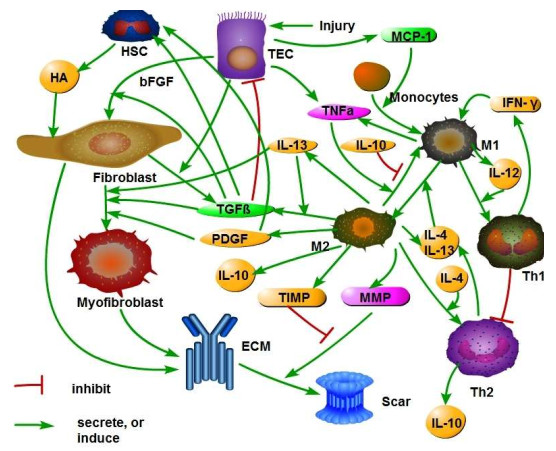
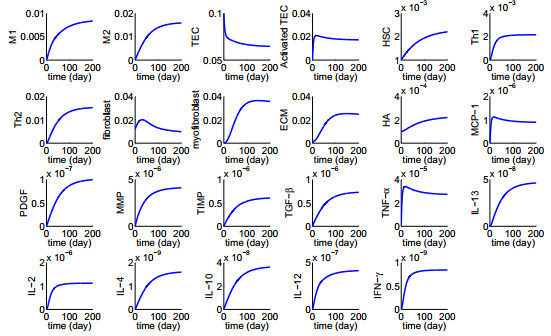
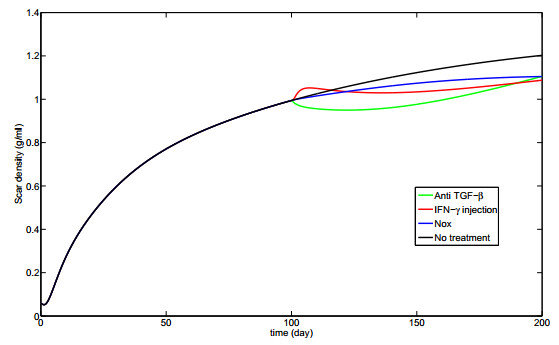
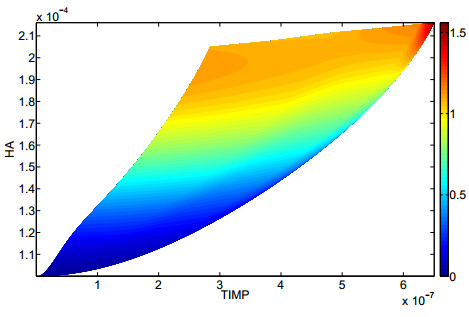
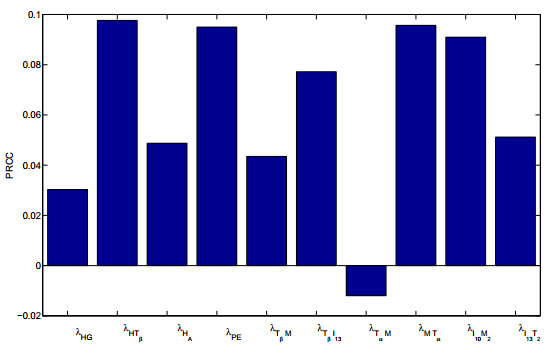


 DownLoad:
DownLoad: